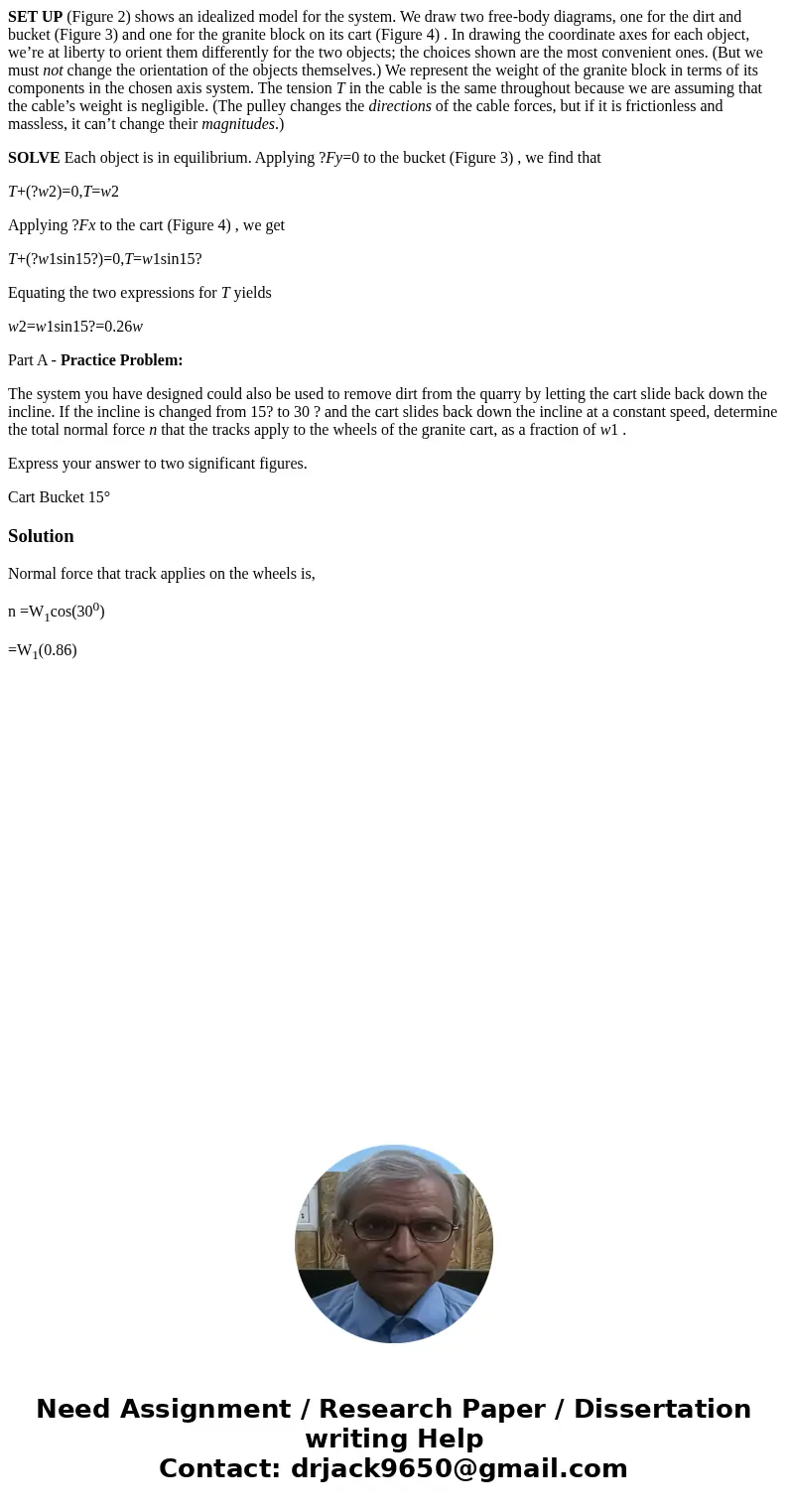SET UP Figure 2 shows an idealized model for the system We d
SET UP (Figure 2) shows an idealized model for the system. We draw two free-body diagrams, one for the dirt and bucket (Figure 3) and one for the granite block on its cart (Figure 4) . In drawing the coordinate axes for each object, we’re at liberty to orient them differently for the two objects; the choices shown are the most convenient ones. (But we must not change the orientation of the objects themselves.) We represent the weight of the granite block in terms of its components in the chosen axis system. The tension T in the cable is the same throughout because we are assuming that the cable’s weight is negligible. (The pulley changes the directions of the cable forces, but if it is frictionless and massless, it can’t change their magnitudes.)
SOLVE Each object is in equilibrium. Applying ?Fy=0 to the bucket (Figure 3) , we find that
T+(?w2)=0,T=w2
Applying ?Fx to the cart (Figure 4) , we get
T+(?w1sin15?)=0,T=w1sin15?
Equating the two expressions for T yields
w2=w1sin15?=0.26w
Part A - Practice Problem:
The system you have designed could also be used to remove dirt from the quarry by letting the cart slide back down the incline. If the incline is changed from 15? to 30 ? and the cart slides back down the incline at a constant speed, determine the total normal force n that the tracks apply to the wheels of the granite cart, as a fraction of w1 .
Express your answer to two significant figures.
Cart Bucket 15°Solution
Normal force that track applies on the wheels is,
n =W1cos(300)
=W1(0.86)

 Homework Sourse
Homework Sourse